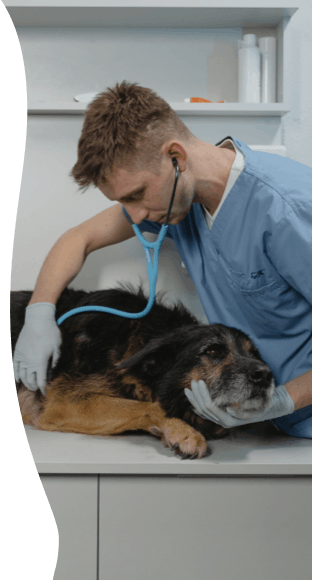what are the best 5 medicines given to a horse for hoof rot
What is Rain Rot?
Rain rot tin can develop on a equus caballus where water stands for long periods of time, such as his dorsum. If he is out in the pasture with no protection against the rain and it rains for days at a fourth dimension, the leaner known as Dermatophilus congolensis takes advantage of the opportunity. It will become into your horse's skin, cause crusty scabbing on the hair and skin, and possibly even a secondary pare infection. If the region is small and yous are comfortable attempting to care for it on your ain, you lot can. Yet, if you are unsure, or if it is affecting a large region, it is recommended you seek veterinary intendance. Without proper treatment, the rain rot will spread and only worsen.
If you live in a wet environment where your horse is unable to dry out out between storms, he is likely to develop a condition known as rain rot. Yous tin try and treat it yourself, just consulting with your veterinarian for a treatment program is best.
Vet bills can sneak up on you.
Plan ahead. Get the pawfect insurance program for your pup.
Compare plans

Pelting Rot Boilerplate Cost
From 319 quotes ranging from $650 - $1,200
Average Cost $one,000
Symptoms of Rain Rot in Horses
Symptoms typically affect the skin where moisture accumulates. Symptoms may include:
- Hair continuing on end
- Thick crusted peel
- Disordered hair
- Warm skin
- Painful to the touch
- Affected hair and skin tin can be peeled away easily
- Raw, sensitive areas can be constitute under the affected, crusted pare
Types
Rain rot is most ordinarily associated with wet, rainy environments where your horse is moisture for long periods of fourth dimension without the risk to dry out. No matter where on your horse's trunk the rain rot appears, information technology is all caused by the same organism. Rain rot can also exist known by the term rain scald.
Top
Causes of Pelting Rot in Horses
Rain rot is caused by the bacterial organism known as Dermatophilus congolensis and most commonly causes problems in moisture climates. Rain rot typically develops in areas where peel has been damaged by insects, trauma, or chronic moisture. An surface area where moisture accumulates, such as the top of your horse's hindquarters or back, is typically where symptoms occur.
Top
Diagnosis of Rain Rot in Horses
Your veterinarian will want to perform a total physical exam on your horse to check for other areas of rain rot evolution. It is likely she will exist able to diagnose what he is experiencing just by advent alone. For exact diagnostics, she will collect a sample of crust and hair from the afflicted region to send out to a diagnostic laboratory. The lab will be able to confirm the exact organism causing the symptoms in your equus caballus.
Your veterinarian may also want to perform claret piece of work to check organ function and severity of the infection. A consummate claret count and chemical science console will offer the necessary information to permit your veterinarian to decide if your horse needs boosted therapies.
Top
Handling of Pelting Rot in Horses
The severity of your equus caballus'south pelting rot condition will determine his grade of handling. Grooming of the area to remove crusts and hair is very of import. Shampooing the expanse with a medicated shampoo is as well helpful. A chlorhexidine or benzoyl peroxide shampoo is ideal when cleaning the area. Shampooing should be repeated daily for 5 to 7 days then as periodically until the condition resolves. In most cases, application of topical medications to the afflicted area in addition to the grooming and shampooing is enough.
Information technology should be noted that you demand to dispose of the crusted peel and hair properly in guild to prevent bacterial contagion of the area and prevent the spread of it to other horses. You should also soak the brushes you use on the affected equus caballus in bleach in order to prevent passing the infection on to some other horse.
In more severe cases of infection, your equus caballus may also need systemic antibiotics. Oral medications or injectable medication may exist appropriate options for your horse's condition.
Top
Recovery of Pelting Rot in Horses
Once proper treatment is started, the rain rot volition resolve and your equus caballus should non endure whatsoever long term consequences. If you do non begin handling as soon as possible, it will spread and just get worse.
Naturally, prevention of rain rot evolution is ideal. In cases where you live in a rainy climate and your horse is turned out for extended periods of time, you may want to consider putting a rain sheet or other waterproof blanket on him. This volition continue water from accumulating and settling straight on his back and hindquarters. If your horse is out in the pasture without protection against the pelting, you lot should check him periodically to ensure he is not developing rain rot.
Top
*Wag! may collect a share of sales or other compensation from the links on this folio. Items are sold by the retailer, not Wag!.
Source: https://wagwalking.com/horse/condition/rain-rot
0 Response to "what are the best 5 medicines given to a horse for hoof rot"
Post a Comment